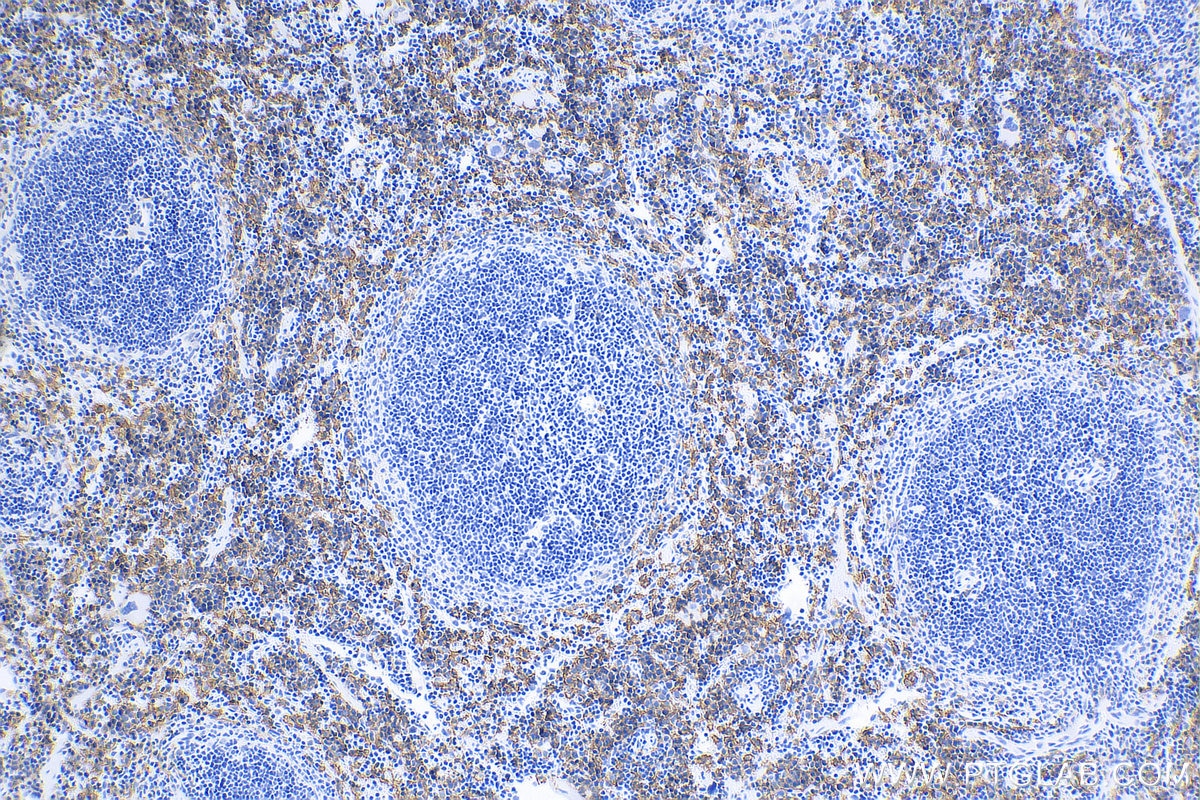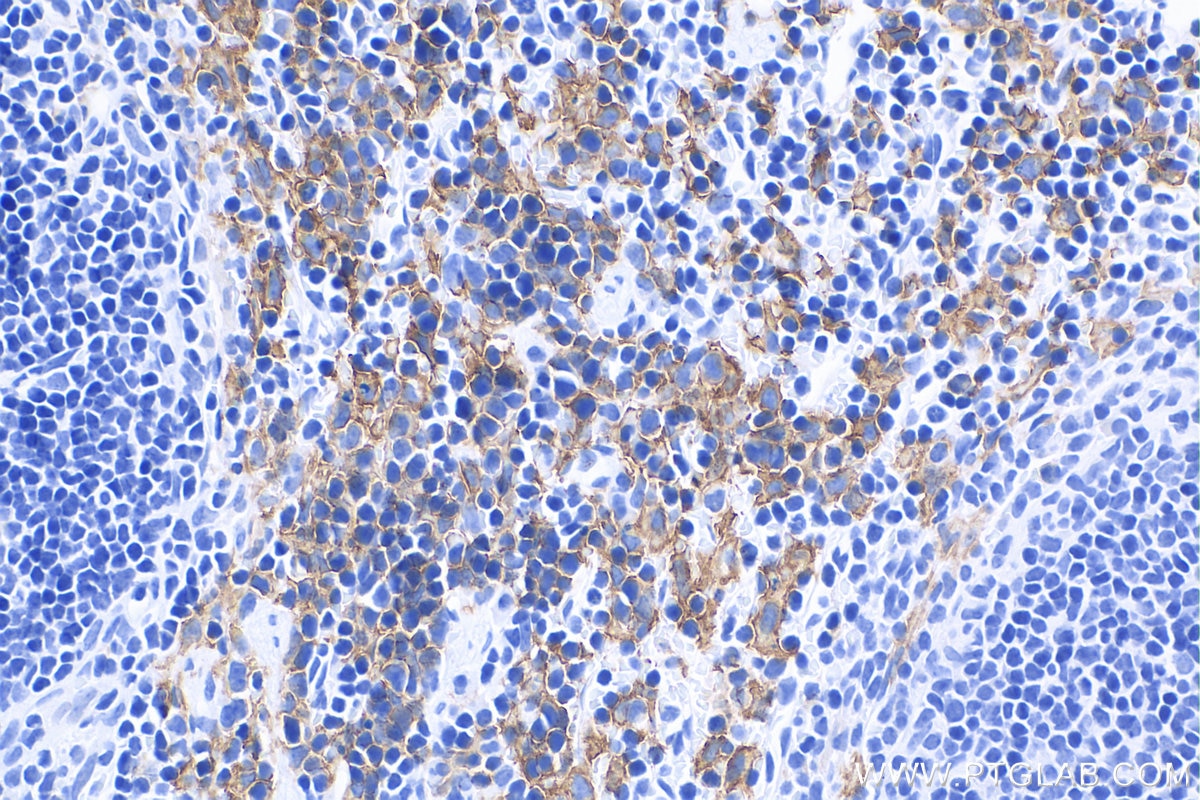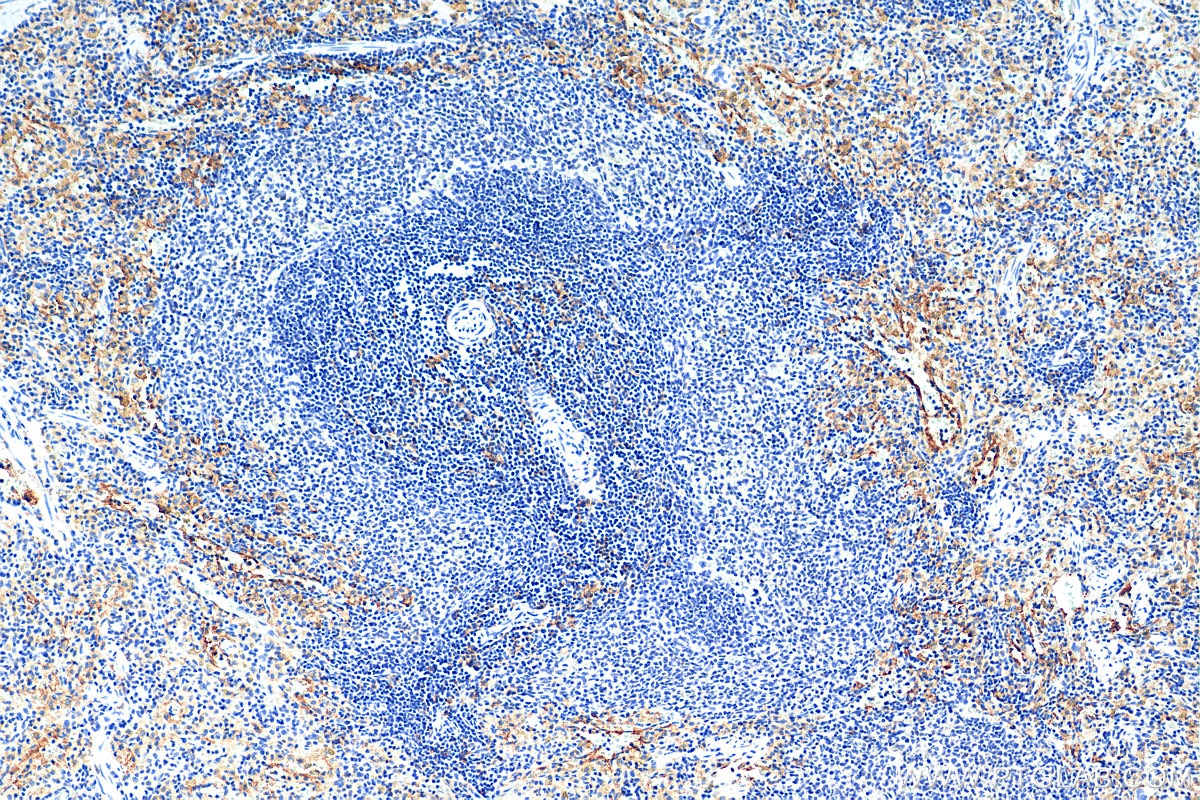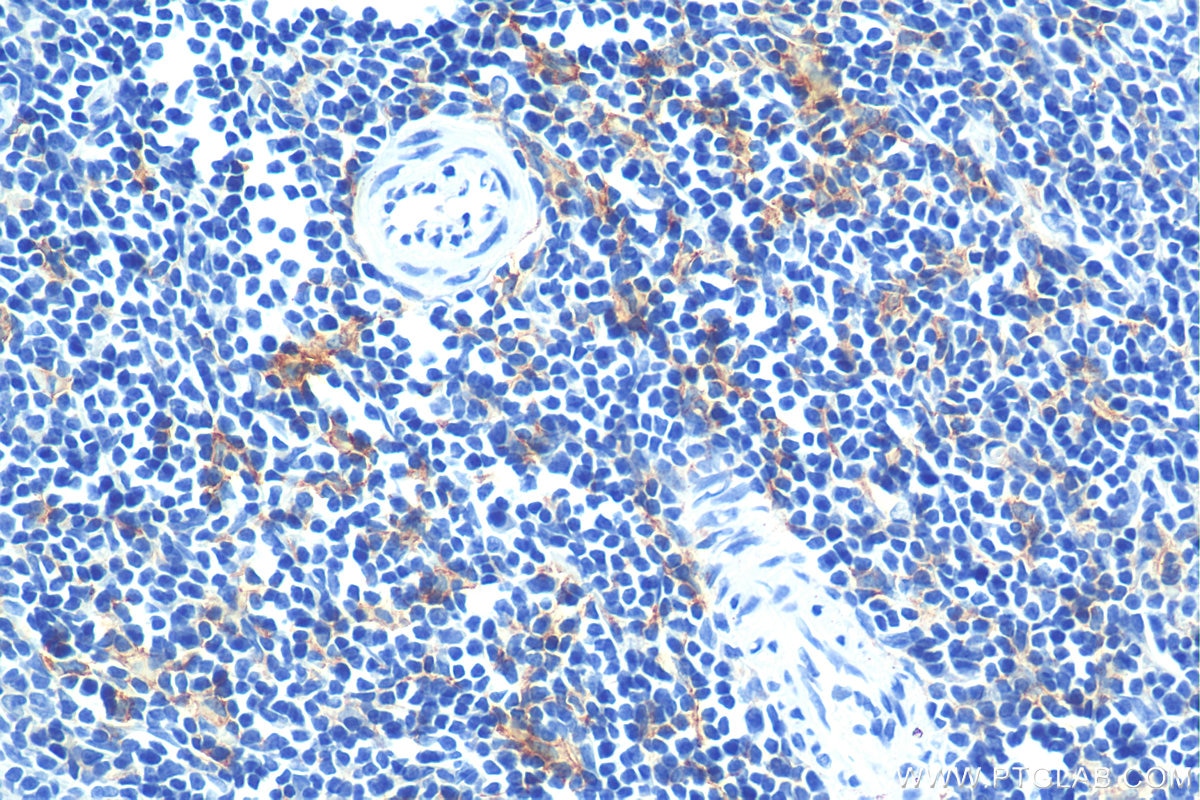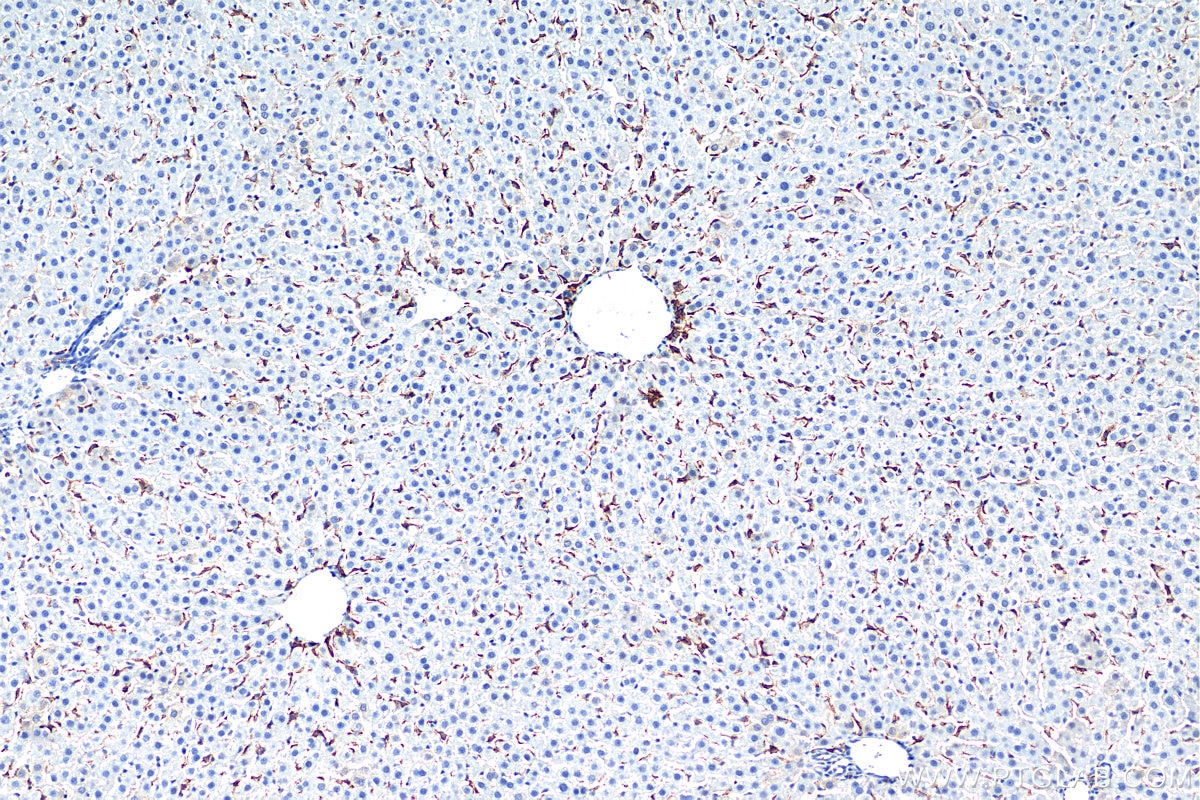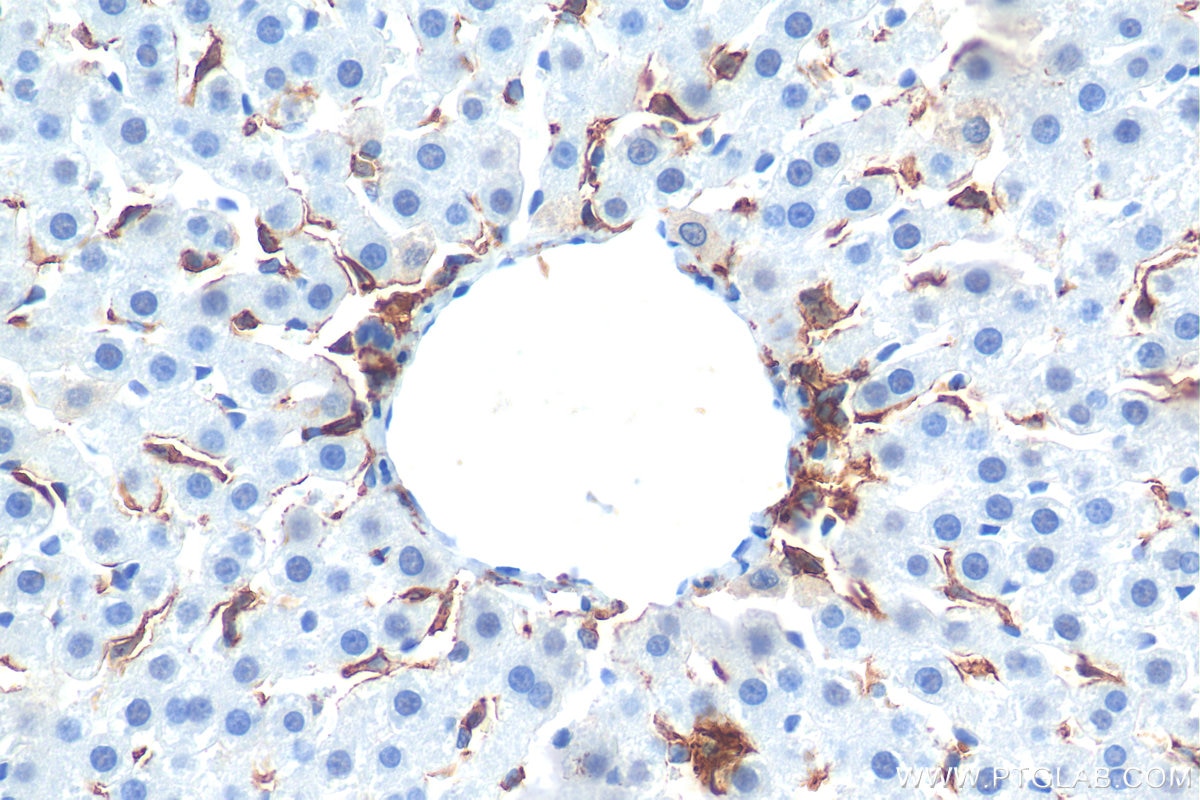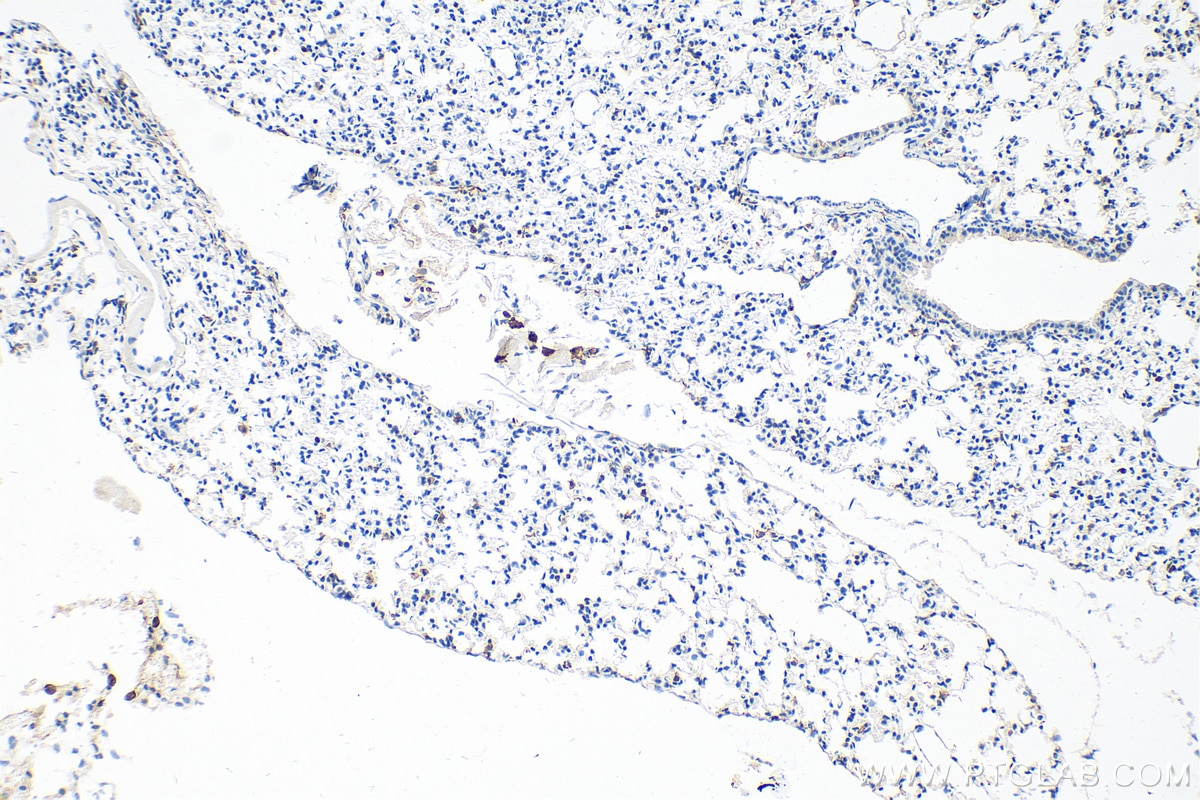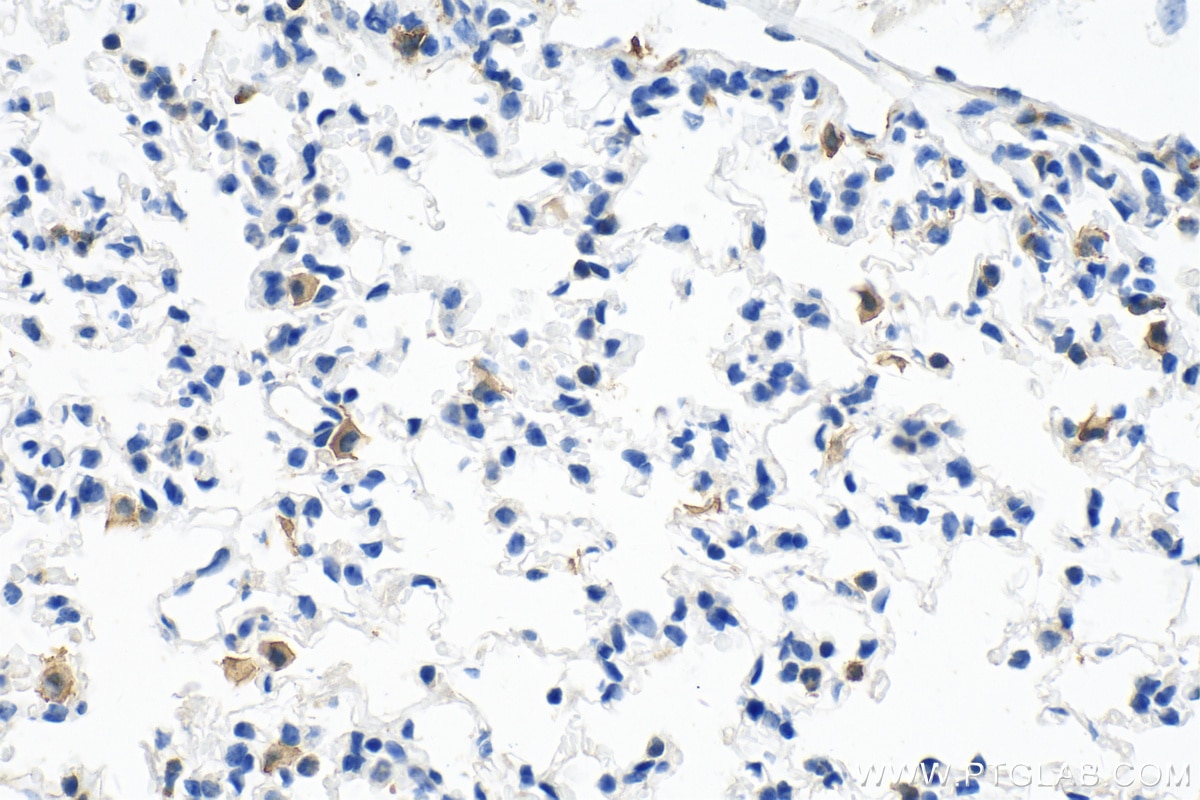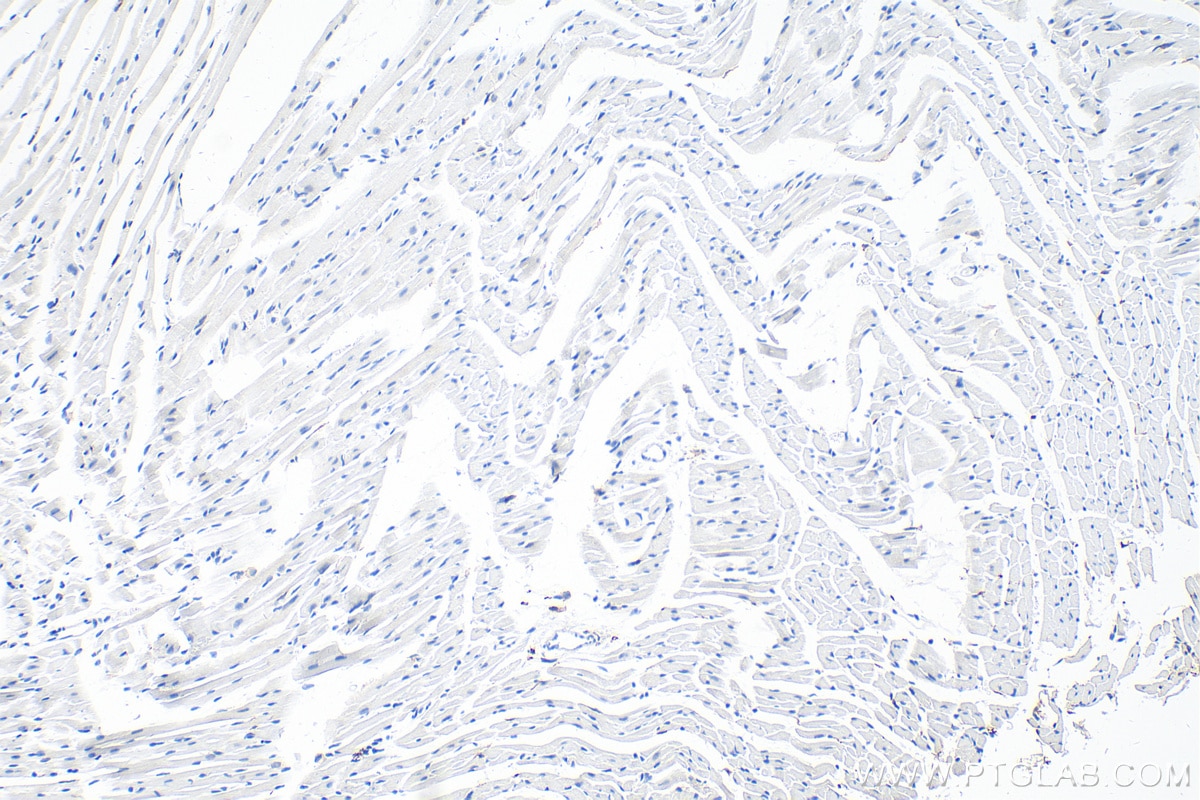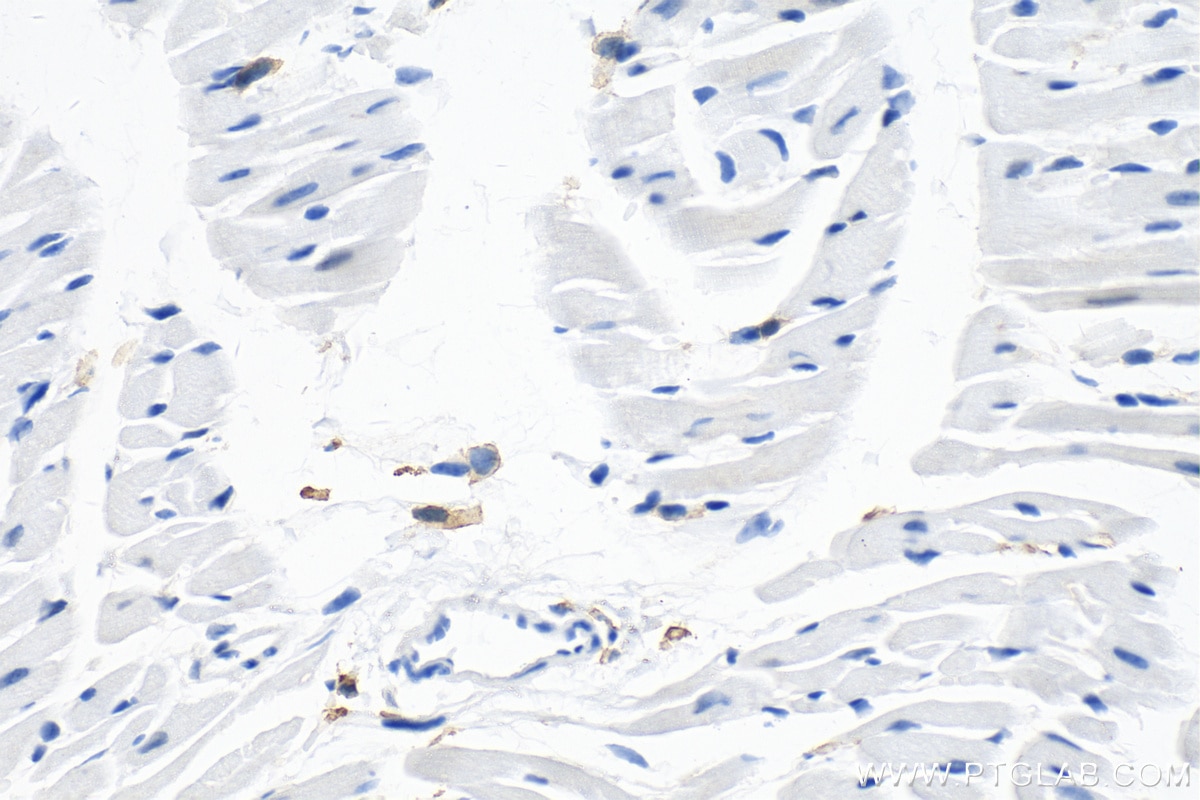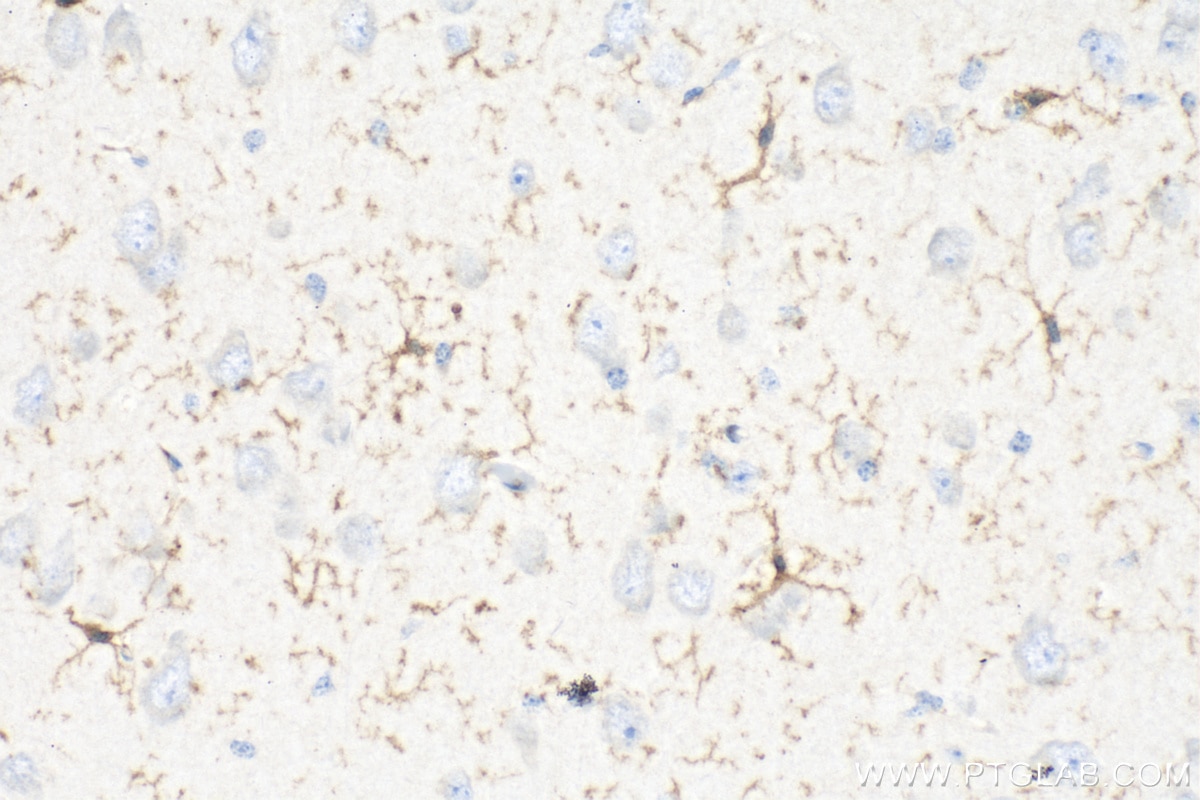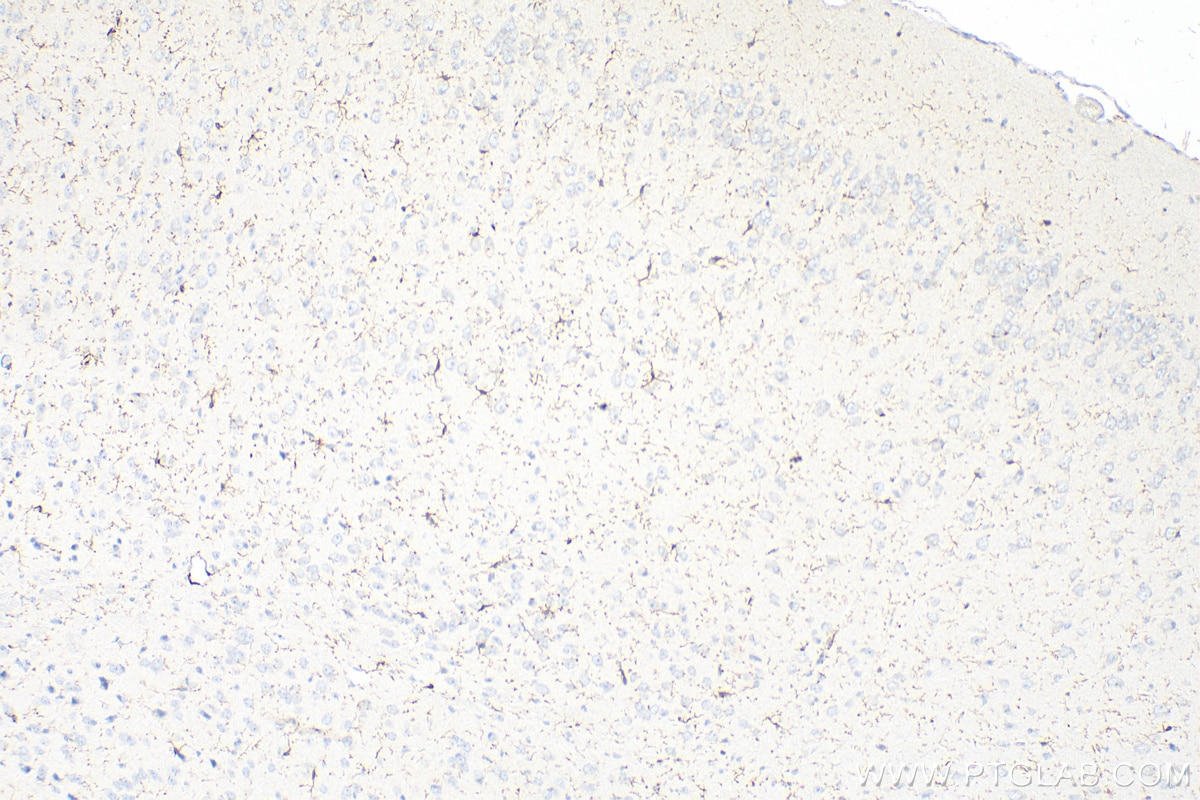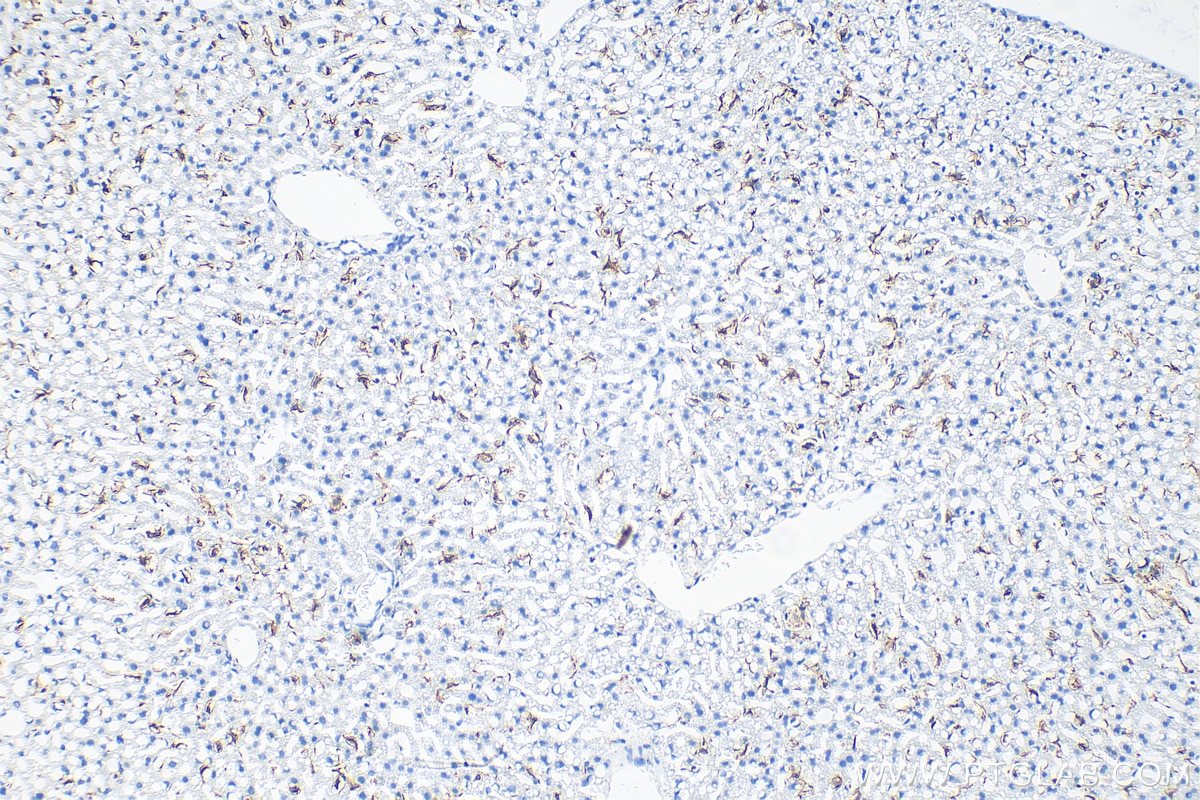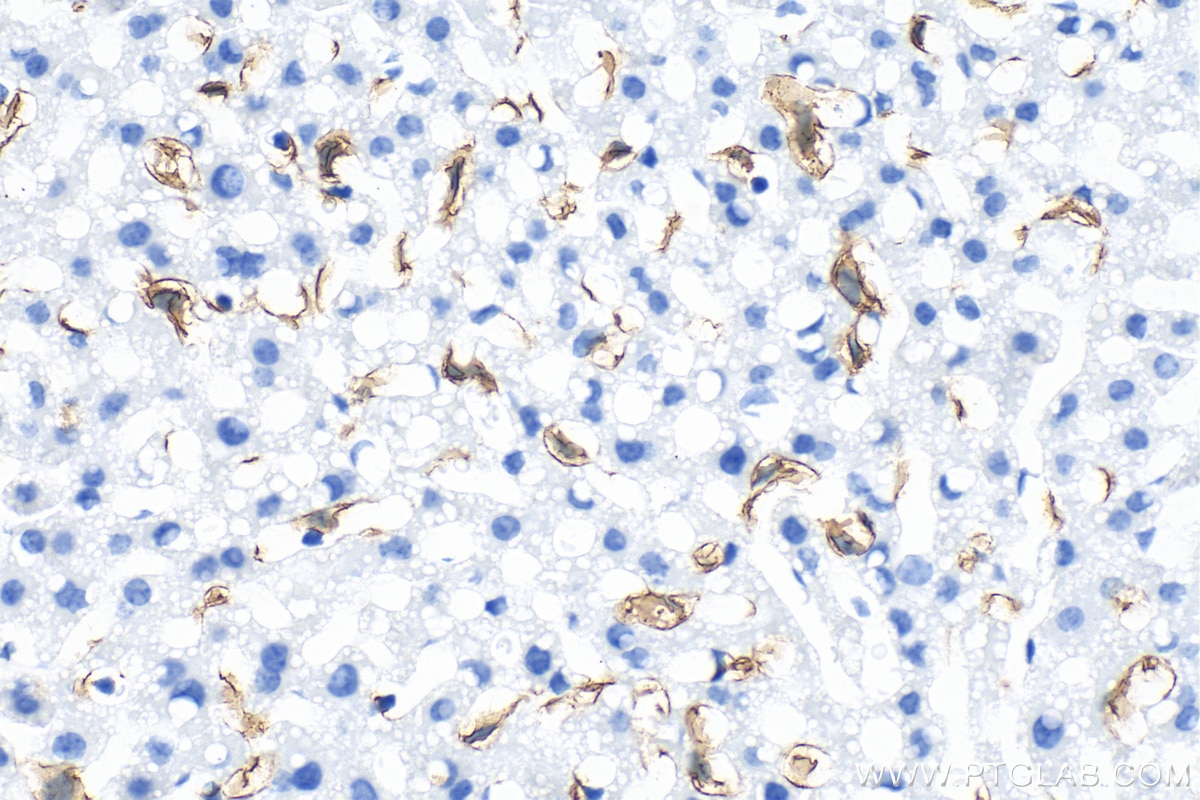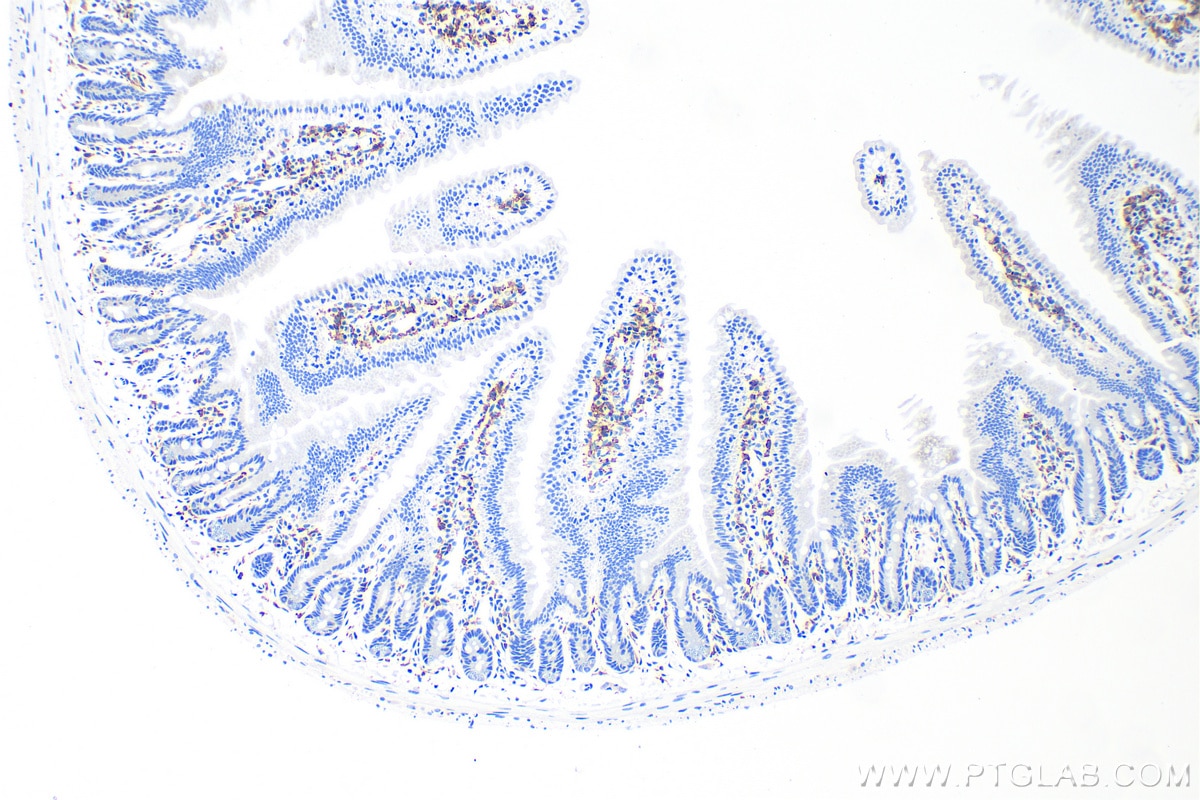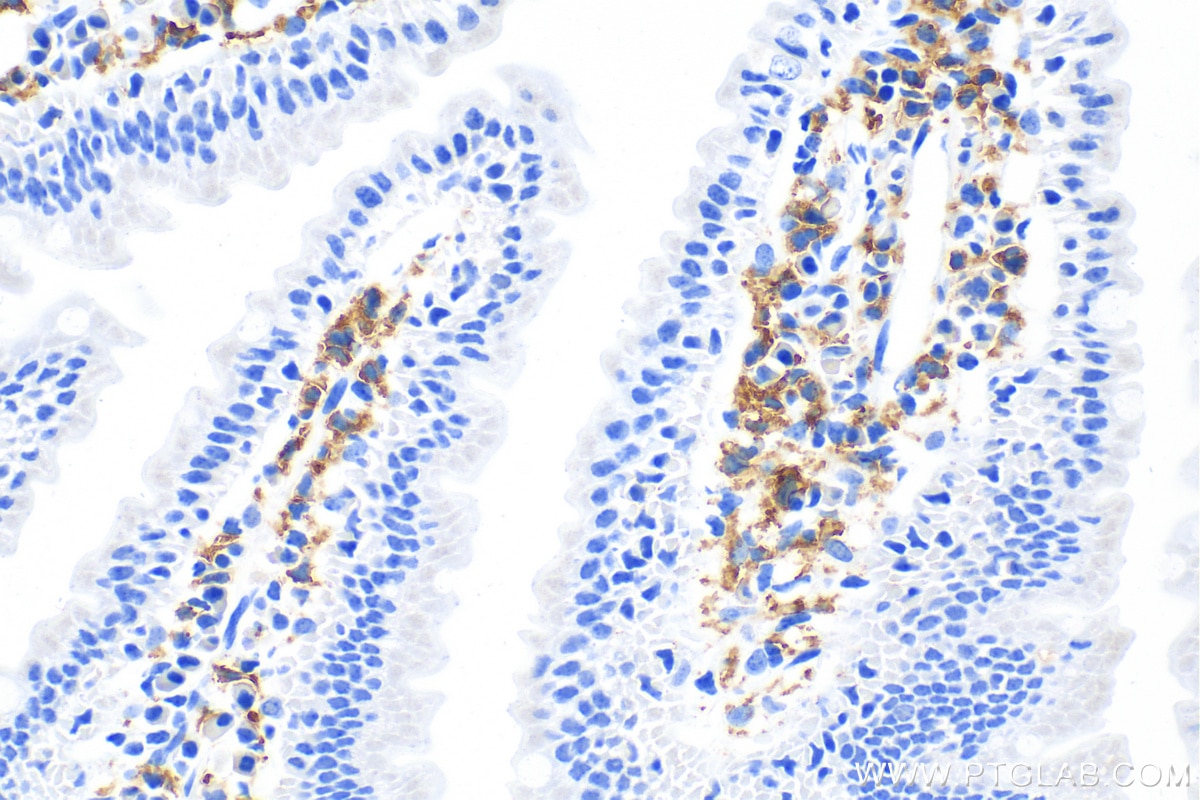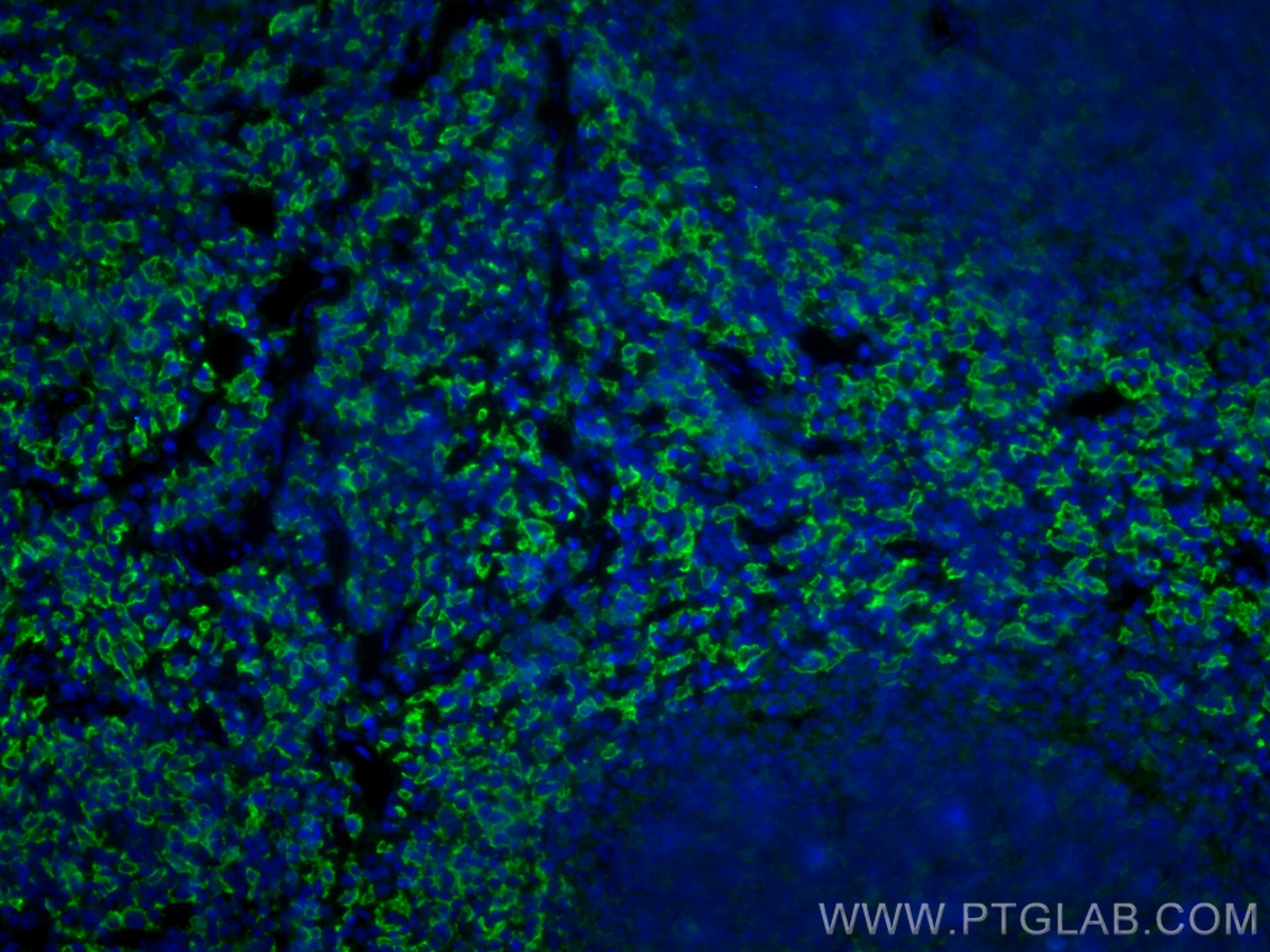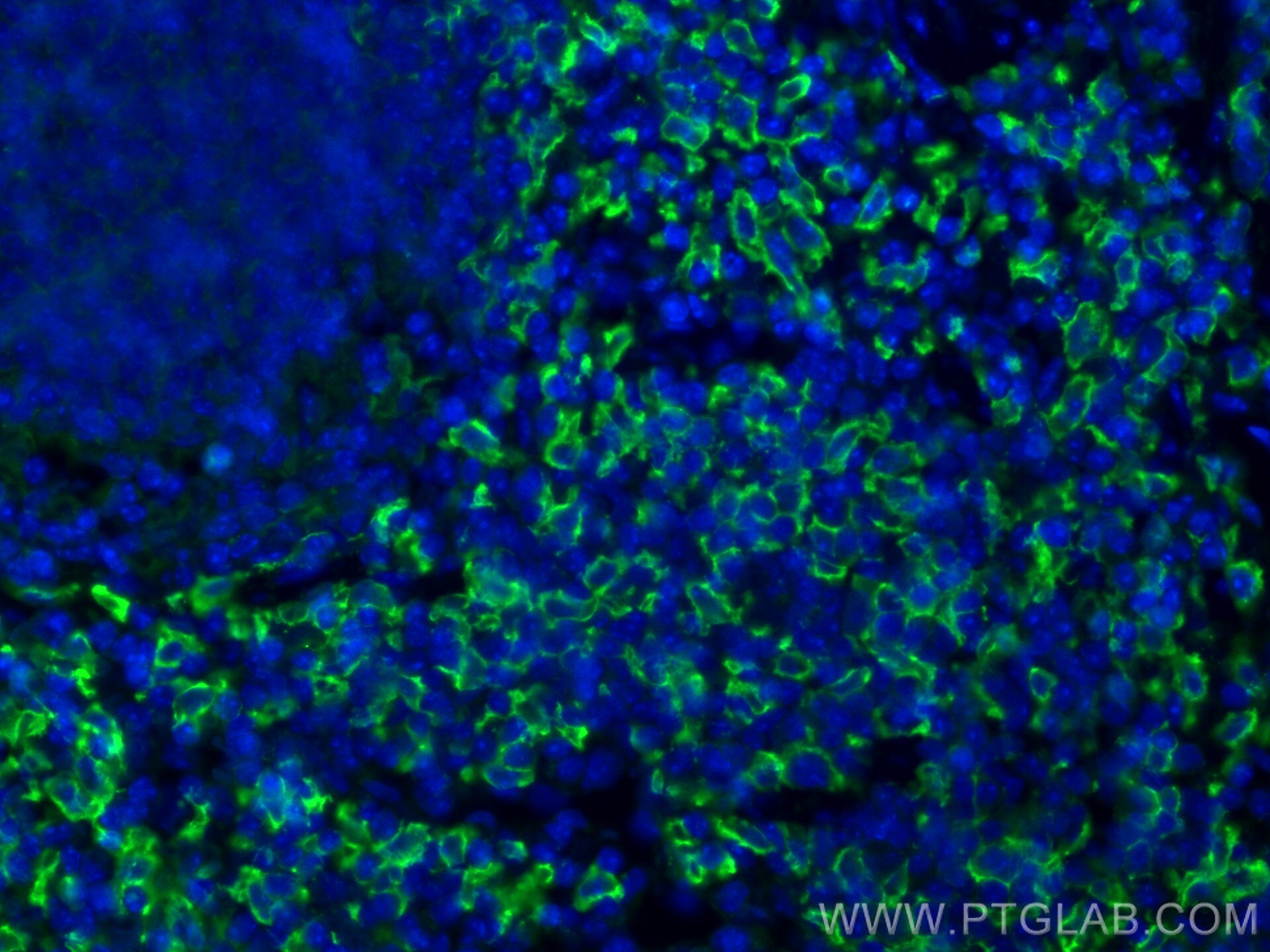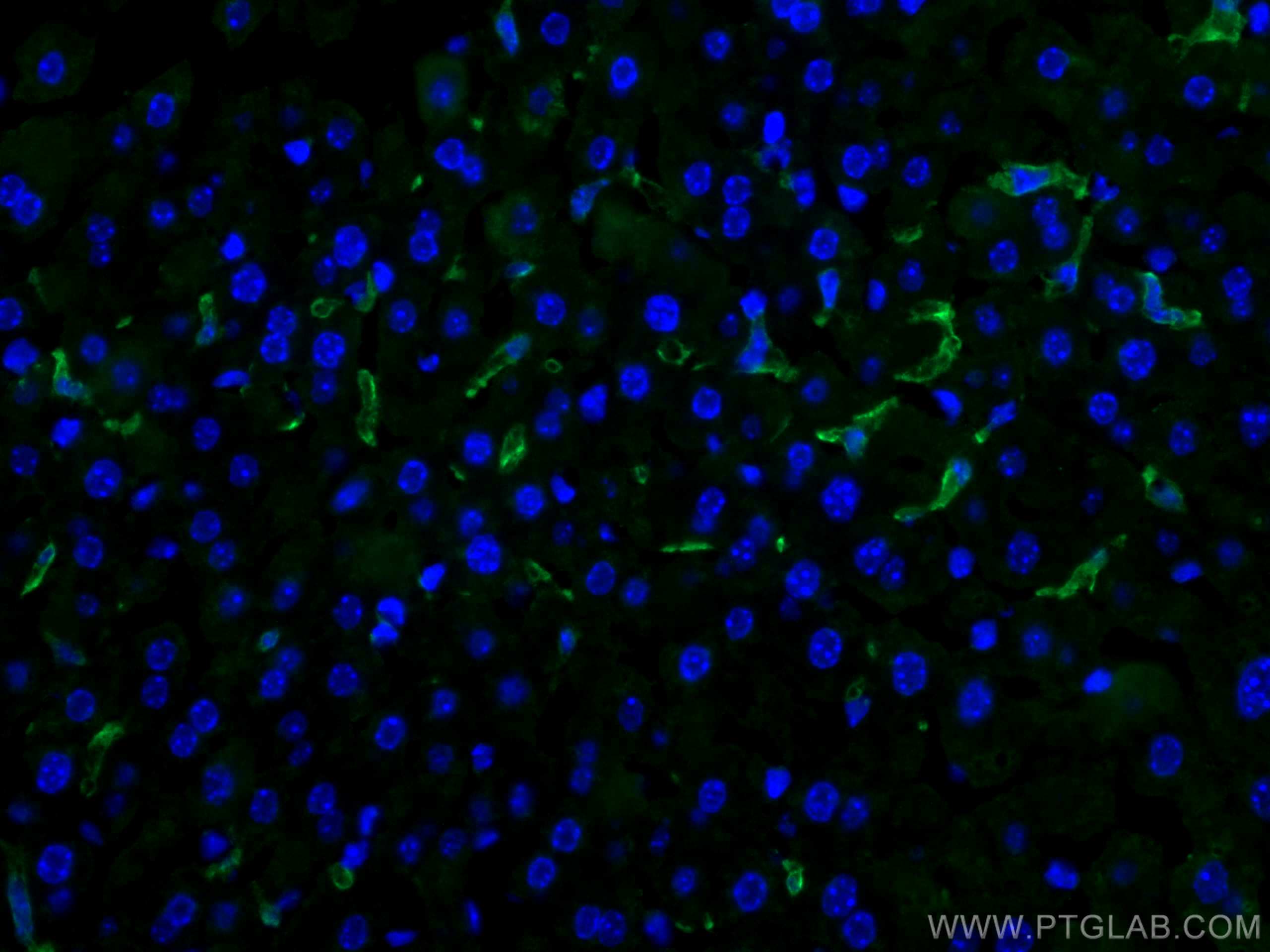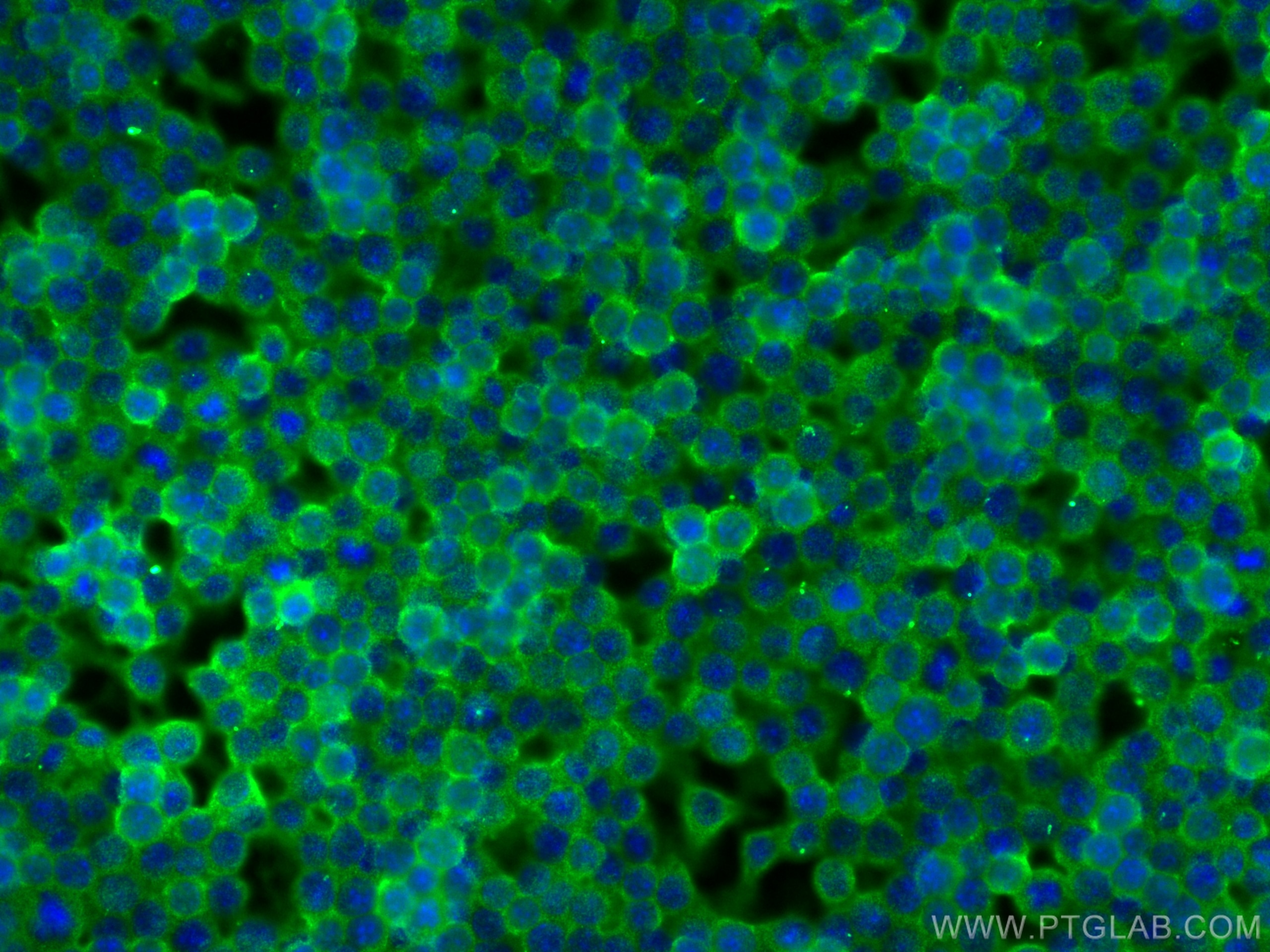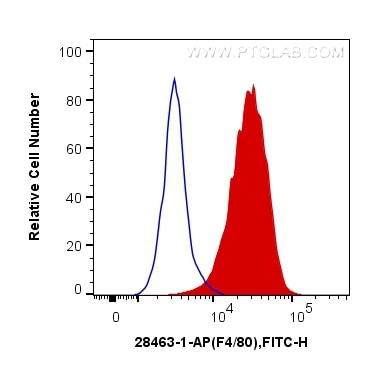F4/80 Polyklonaler Antikörper
F4/80 Polyklonal Antikörper für FC, IF, IHC, ELISA
Wirt / Isotyp
Kaninchen / IgG
Getestete Reaktivität
Maus, Ratte und mehr (2)
Anwendung
WB, IHC, IF, FC, ELISA
Konjugation
Unkonjugiert
Kat-Nr. : 28463-1-AP
Synonyme
Galerie der Validierungsdaten
Geprüfte Anwendungen
| Erfolgreiche Detektion in IHC | Mausmilzgewebe, Maus-Dünndarmgewebe, Mausherzgewebe, Maushirngewebe, Mauslebergewebe, Mauslungengewebe, Rattenlebergewebe, Rattenmilzgewebe Hinweis: Antigendemaskierung mit TE-Puffer pH 9,0 empfohlen. (*) Wahlweise kann die Antigendemaskierung auch mit Citratpuffer pH 6,0 erfolgen. |
| Erfolgreiche Detektion in IF | Mausmilzgewebe, Mauslebergewebe, RAW 264.7-Zellen |
| Erfolgreiche Detektion in FC | RAW 264.7-Zellen |
Empfohlene Verdünnung
| Anwendung | Verdünnung |
|---|---|
| Immunhistochemie (IHC) | IHC : 1:4000-1:12000 |
| Immunfluoreszenz (IF) | IF : 1:50-1:500 |
| Durchflusszytometrie (FC) | FC : 0.40 ug per 10^6 cells in a 100 µl suspension |
| It is recommended that this reagent should be titrated in each testing system to obtain optimal results. | |
| Sample-dependent, check data in validation data gallery | |
Veröffentlichte Anwendungen
| WB | See 12 publications below |
| IHC | See 79 publications below |
| IF | See 56 publications below |
| FC | See 8 publications below |
Produktinformation
28463-1-AP bindet in WB, IHC, IF, FC, ELISA F4/80 und zeigt Reaktivität mit Maus, Ratten
| Getestete Reaktivität | Maus, Ratte |
| In Publikationen genannte Reaktivität | human, Hausschwein, Maus, Ratte |
| Wirt / Isotyp | Kaninchen / IgG |
| Klonalität | Polyklonal |
| Typ | Antikörper |
| Immunogen | F4/80 fusion protein Ag28252 |
| Vollständiger Name | EGF-like module containing, mucin-like, hormone receptor-like sequence 1 |
| Berechnetes Molekulargewicht | 102 kDa |
| GenBank-Zugangsnummer | NM_010130 |
| Gene symbol | Emr1 |
| Gene ID (NCBI) | 13733 |
| Konjugation | Unkonjugiert |
| Form | Liquid |
| Reinigungsmethode | Antigen-Affinitätsreinigung |
| Lagerungspuffer | PBS mit 0.02% Natriumazid und 50% Glycerin pH 7.3. |
| Lagerungsbedingungen | Bei -20°C lagern. Nach dem Versand ein Jahr lang stabil Aliquotieren ist bei -20oC Lagerung nicht notwendig. 20ul Größen enthalten 0,1% BSA. |
Hintergrundinformationen
Mouse F4/80, also named as EMR1 and Gpf480, is a 160kd cell surface glycoprotein which is a member of the EGF TM7 family. The F4/80 molecule is solely expressed on the surface of macrophages and serves as a marker for mature macrophage tissues, including Kupffer cells in liver, splenic red pulp macrophages, brain microglia, gut lamina propria and Langerhans cells in the skin. The function of F4/80 is unclear, but it is speculated to be involved in macrophage adhesion events, cell migration or as a G protein-coupled signaling component of macrophages.
Protokolle
| Produktspezifische Protokolle | |
|---|---|
| IHC protocol for F4/80 antibody 28463-1-AP | Protokoll herunterladen |
| IF protocol for F4/80 antibody 28463-1-AP | Protokoll herunterladen |
| Standard-Protokolle | |
|---|---|
| Klicken Sie hier, um unsere Standardprotokolle anzuzeigen |
Publikationen
| Species | Application | Title |
|---|---|---|
Biomaterials Light-controlled oxygen production and collection for sustainable photodynamic therapy in tumor hypoxia. | ||
Biomaterials A myogenic niche with a proper mechanical stress environment improves abdominal wall muscle repair by modulating immunity and preventing fibrosis. | ||
Aging Dis P-Glycoprotein Aggravates Blood Brain Barrier Dysfunction in Experimental Ischemic Stroke by Inhibiting Endothelial Autophagy | ||
Autophagy Autophagy loss impedes cancer-associated fibroblast activation via downregulating proline biosynthesis. | ||
Acta Biomater An electrospun scaffold functionalized with a ROS-scavenging hydrogel stimulates ocular wound healing |
Rezensionen
The reviews below have been submitted by verified Proteintech customers who received an incentive forproviding their feedback.
FH Kannan (Verified Customer) (06-13-2023) | AR using EDTApH9. overnight incubation of primary antibody at 4c.
|
